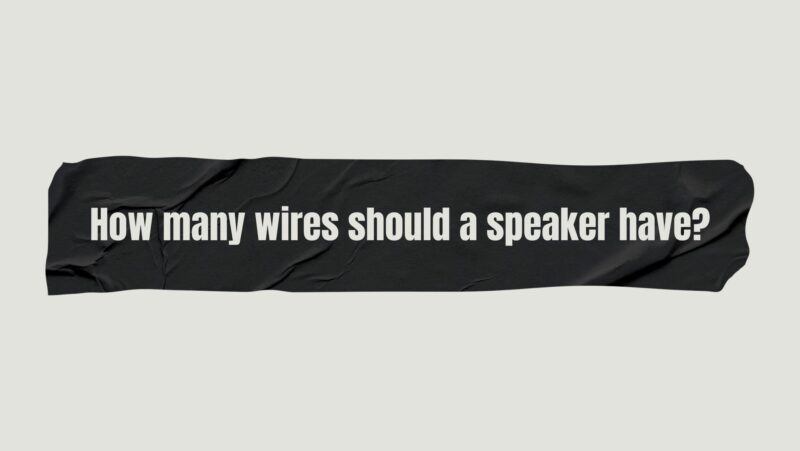A speaker can have anywhere from one to four wires. The number of wires depends on the type of speaker and the connection method.
- Single-wire speakers: Single-wire speakers have only one wire. This wire carries both the positive and negative signals from the amplifier. Single-wire speakers are the most common type of speaker and are typically used in home stereo systems.
- Bi-wired speakers: Bi-wired speakers have two sets of wires. One set of wires carries the low-frequency signals, and the other set of wires carries the high-frequency signals. Bi-wiring can improve the sound quality of a speaker by reducing distortion and improving clarity.
- Bi-amped speakers: Bi-amped speakers have two amplifiers. One amplifier powers the low-frequency speakers, and the other amplifier powers the high-frequency speakers. Bi-amping can improve the sound quality of a speaker by providing more power and control.
- Tri-wired speakers: Tri-wired speakers have three sets of wires. One set of wires carries the low-frequency signals, the second set of wires carries the mid-frequency signals, and the third set of wires carries the high-frequency signals. Tri-wiring is a more advanced speaker connection method that can improve the sound quality of a speaker even further.
- Quad-wired speakers: Quad-wired speakers have four sets of wires. One set of wires carries the low-frequency signals, the second set of wires carries the mid-frequency signals, the third set of wires carries the high-frequency signals, and the fourth set of wires carries the surround sound signals. Quad-wired speakers are typically used in home theater systems.
The number of wires that a speaker has will depend on the type of speaker and the connection method that you are using. If you are not sure how many wires your speaker should have, it is always best to check the speaker’s manual.


